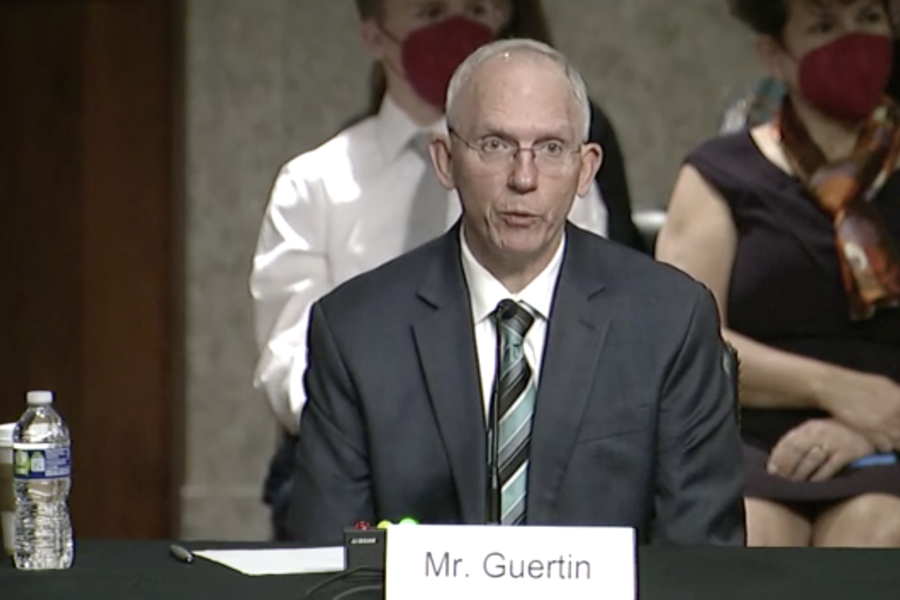Lessons from the KC-46 and F-35 will prove useful to the testing community in the years to come, the nominee to take over the role of director of operational test and evaluation for the Pentagon told lawmakers Oct. 19.
Nickolas Guertin, put forward by President Joe Biden to lead the Defense Department’s testing and evaluation efforts for major acquisition programs, appeared before the Senate Armed Services Committee as part of a slate of nominees and received questions on two of the Air Force’s highest profile modernization efforts, both of which have endured ongoing testing issues and deficiencies.
The Air Force has identified six Category 1 deficiencies in the KC-46, most prominently with the tanker’s troubled Remote Vision System, the camera that distorts and, in some light, obscures the boom operator’s view. That has led to the aircraft manufacturer Boeing announcing that it will develop and install a new system, dubbed Remote Vision System 2.0, with the hope of putting it in planes starting in late 2023.
Asked by Sen. Jeanne Shaheen (D-N.H.) to pledge that he would keep testing and evaluation of RVS 2.0 on schedule, Guertin said he would and pointed to a key area where previous testing for the tanker had fallen short.
“It’s especially important that the systems are tested the way they will be operated operationally, and to have those things come out as a part of fielding them is not the time we want to discover those problems,” Guertin said.
The F-35, meanwhile, has had its share of issues as well. In July, Defense News reported that the Joint Strike Fighter’s list of critical deficiencies was down to seven, after hitting 13 in 2019. The exact nature of the most recent deficiencies have not been publicly disclosed, but Guertin hinted Oct. 19 that the complexity of the stealth fighter’s systems made it such that real-world testing was sometimes a challenge.
“One of the things we need to be thinking about as we move forward into the future is a tighter alignment between modeling complex systems like the F-35—it’s got a lot going on under the hood—some things you’re not going to be able to test operationally all at the same time in a threat-representative environment, so we need to be thinking about how we combine modeling and simulation of those environments with applied physical testing,” Guertin told Sen. Mark Kelly (D-Ariz.).
The Air Force has used “digital twins” in the recent past, creating a virtual replica of a platform then simulating tests to shorten the testing time before fielding a system. The goal, acting Air Force acquisition boss Darlene Costello said in July, was to save physical tests only for the things that most require it.
Guertin seemed to agree with that view, writing in response to the Senate panel’s advanced policy questions that “digital technology, including strategic use of modeling and simulation, should be used much more frequently” to provide quicker, more incremental updates for systems.
However, there are limitations to digital modeling and simulations, Guertin later wrote. Specifically, these processes require real-life data that is accurate and reliable so that the simulations reflect operational reality.
“The early costs of [modeling and simulation] may be high, but it produces significant dividends in testing of the follow-on iterations of a system or a similar system,” Guertin wrote.
As the Air Force proceeds with development of the Next Generation Air Dominance platform, officials have already used digital methods to design the planned sixth-generation fighter. And when it comes time for testing and evaluation, Guertin said Oct. 19 that the F-35 has been a “great use case” to build upon.
“We need to be taking full advantage of the lessons, both good and bad, in how we position ourselves in the future for taking advantage of those kinds of technologies as we build up these more and more complex systems, as we move further forward into the future,” he said.

